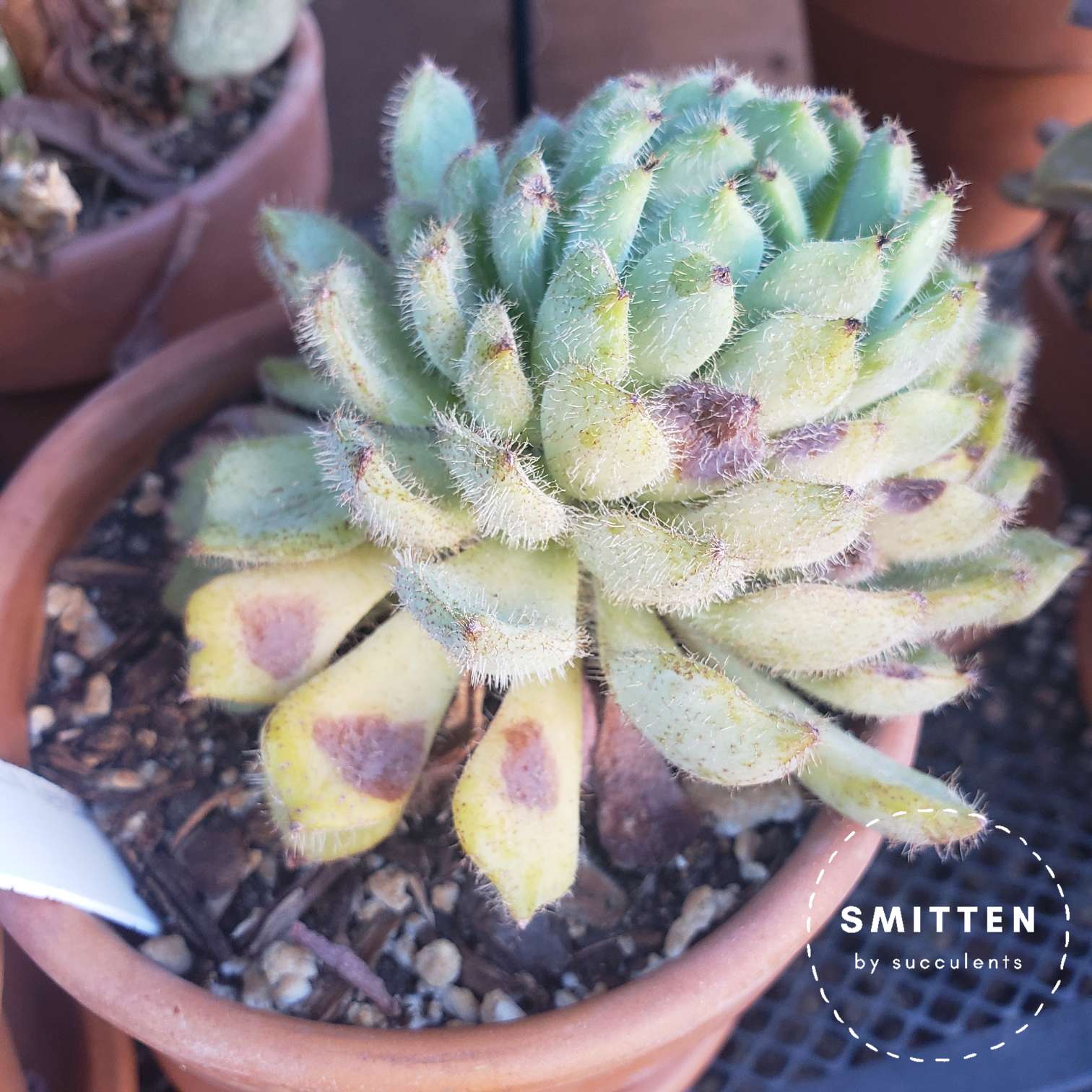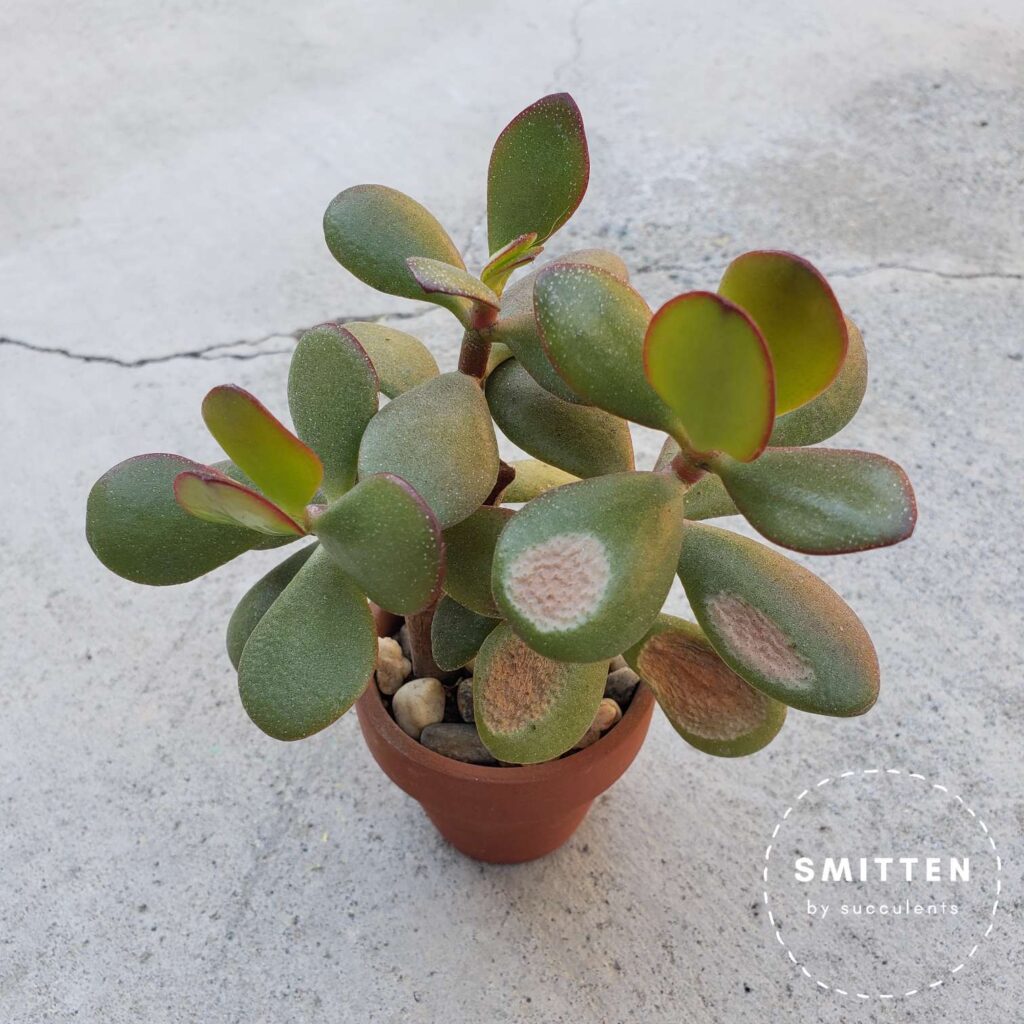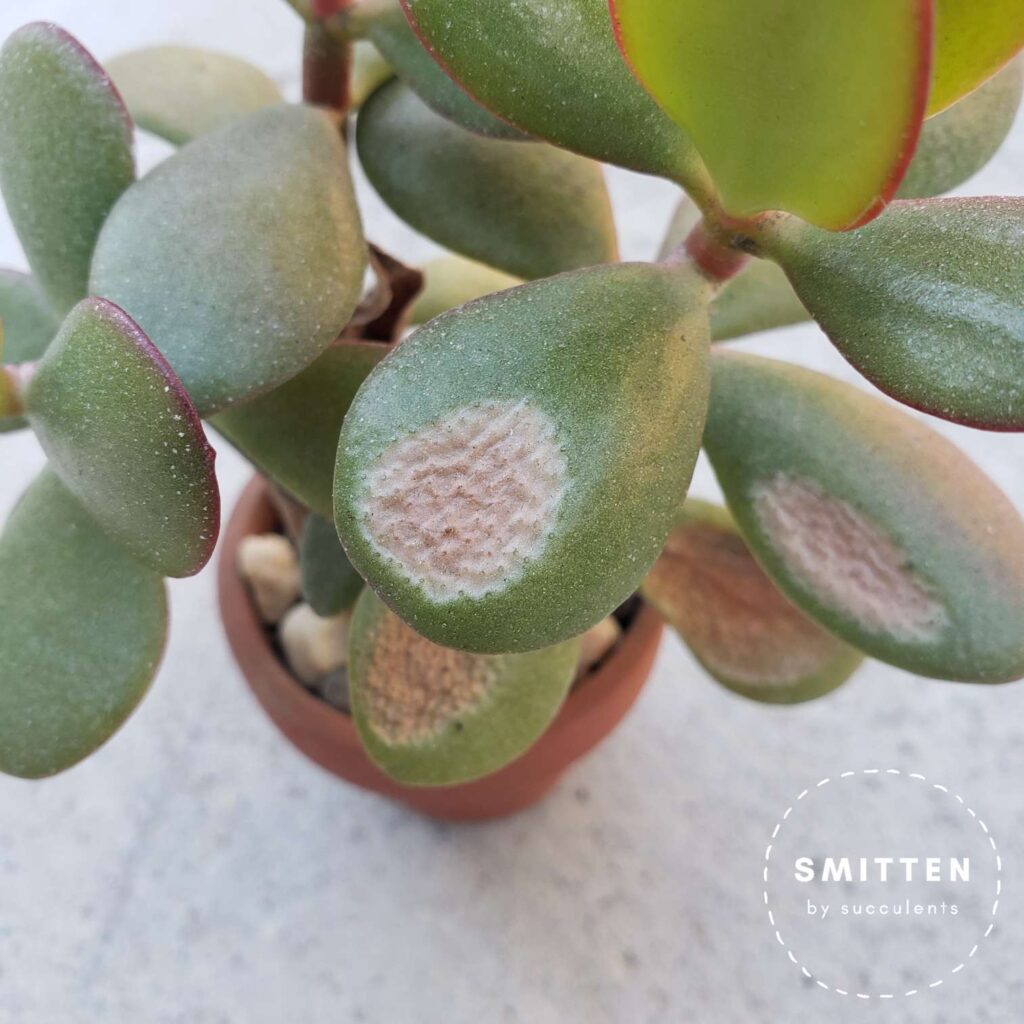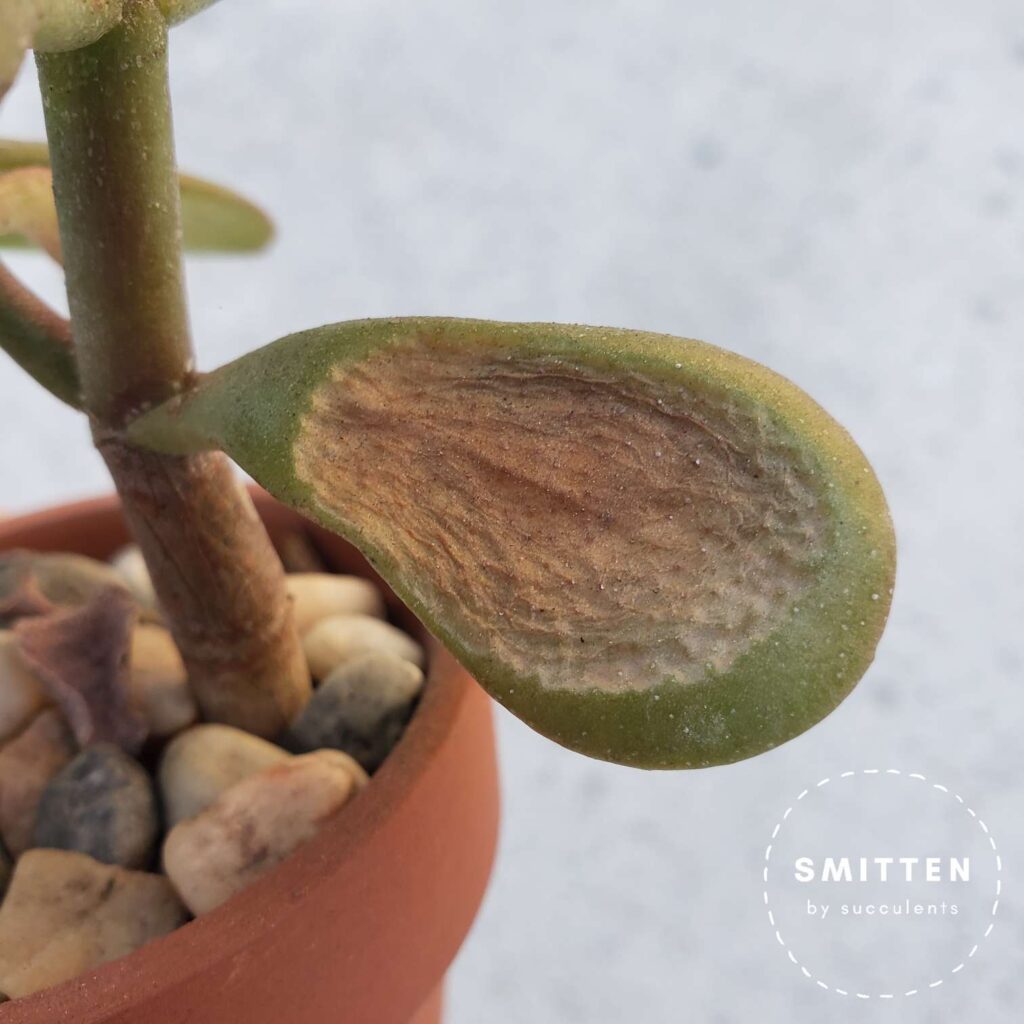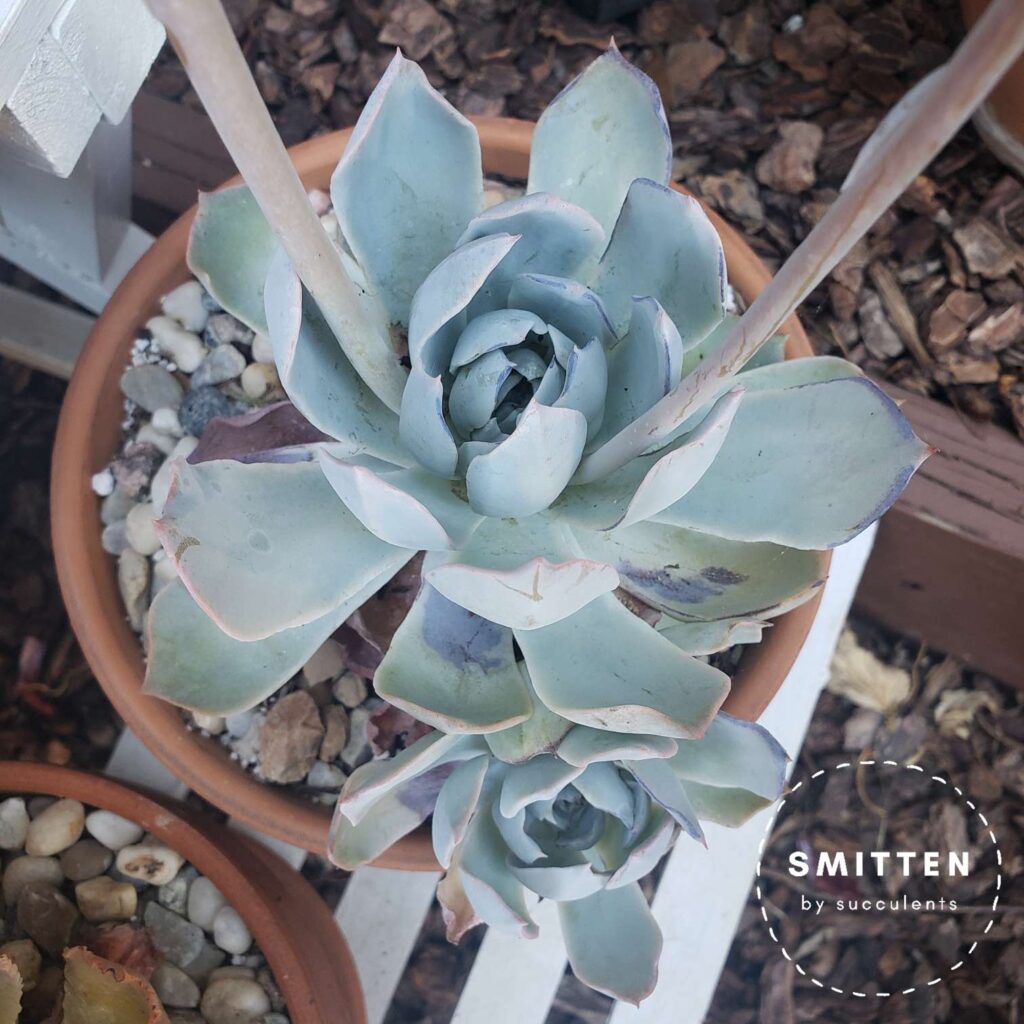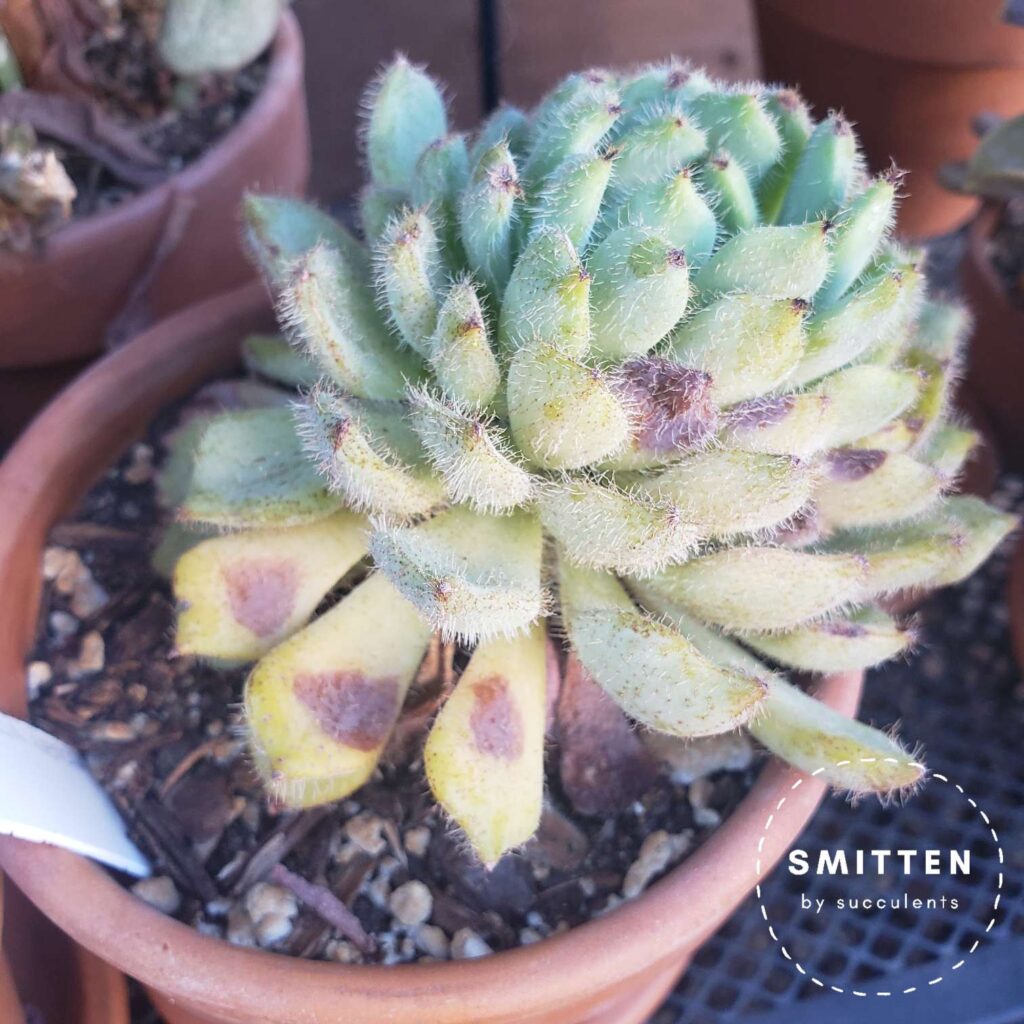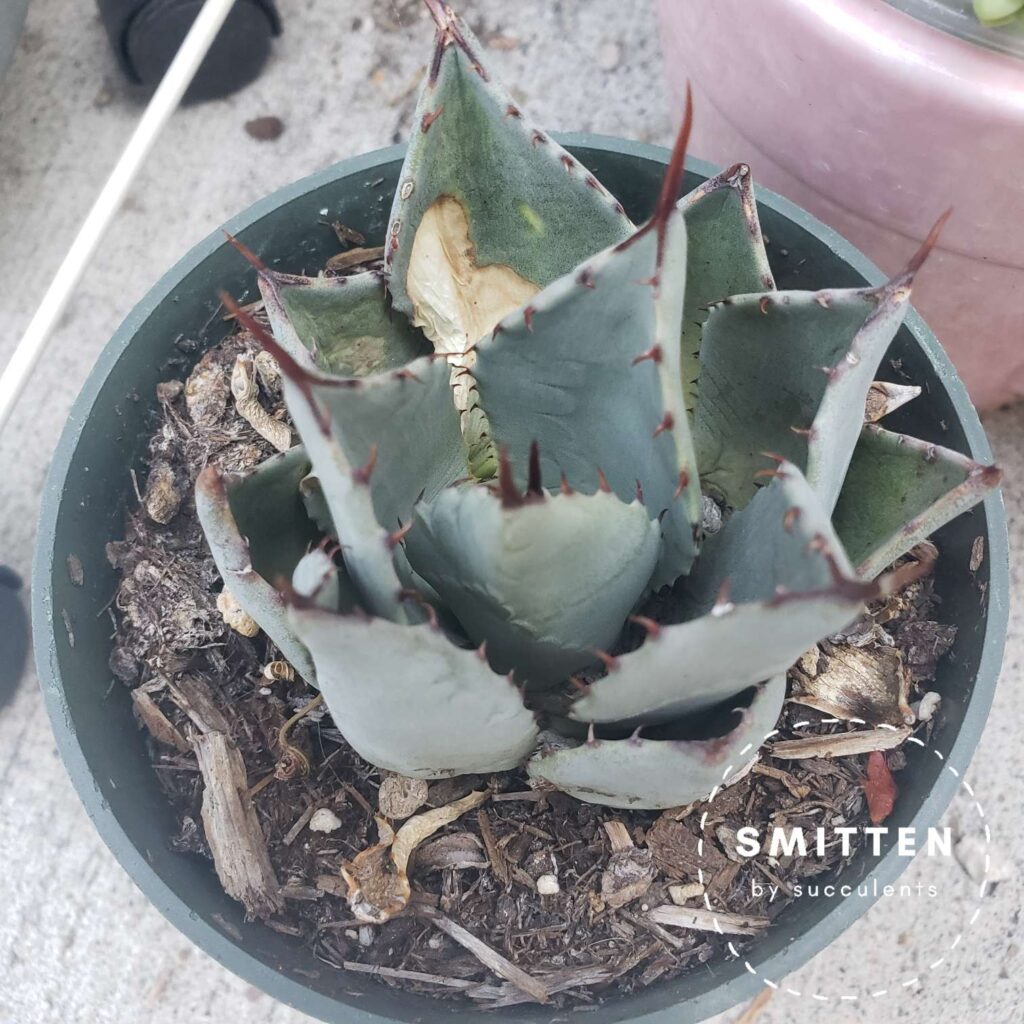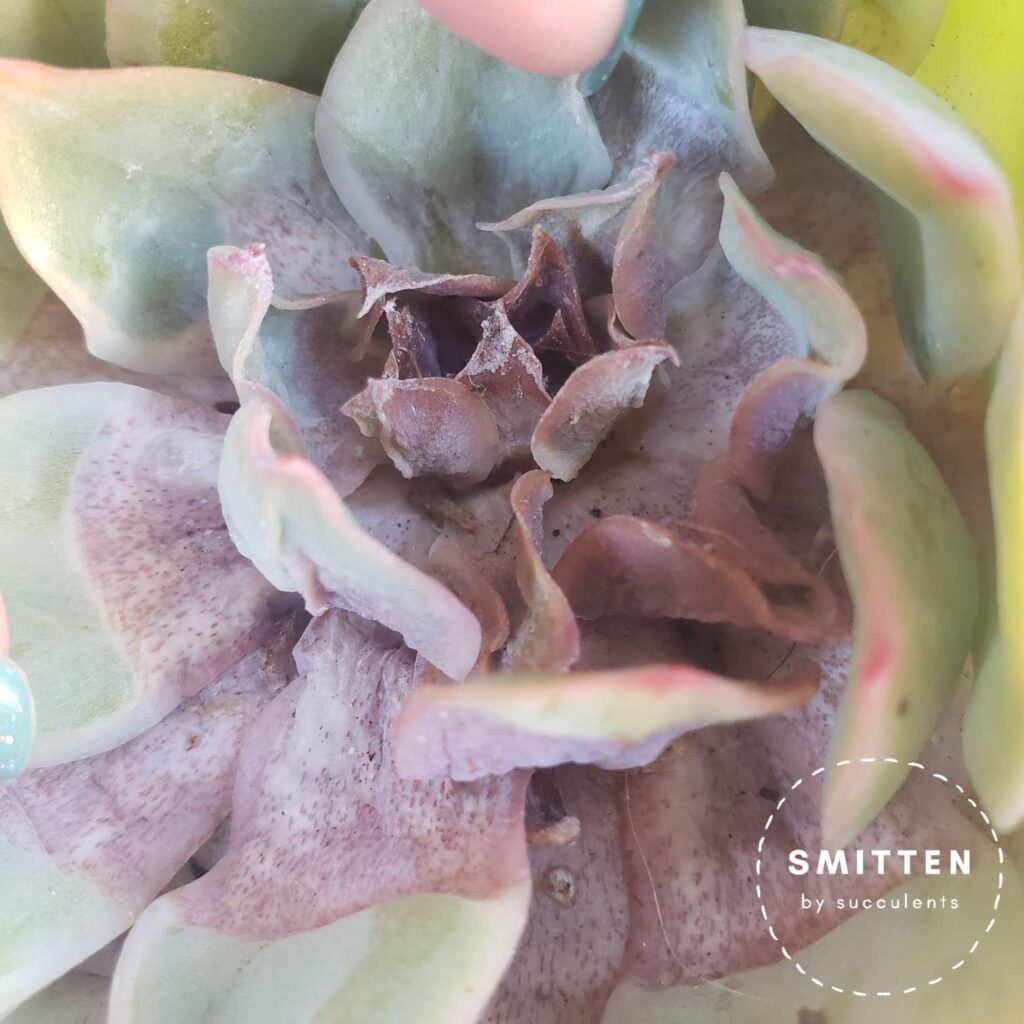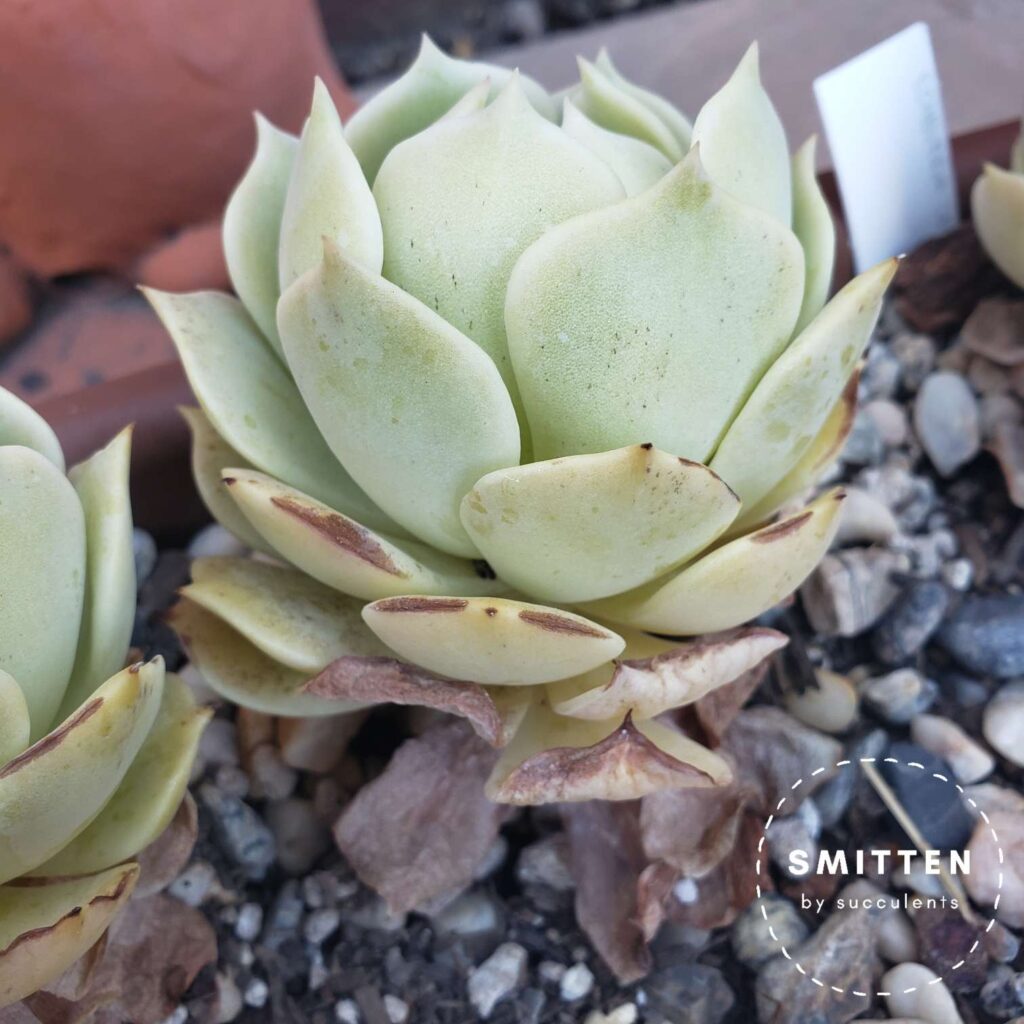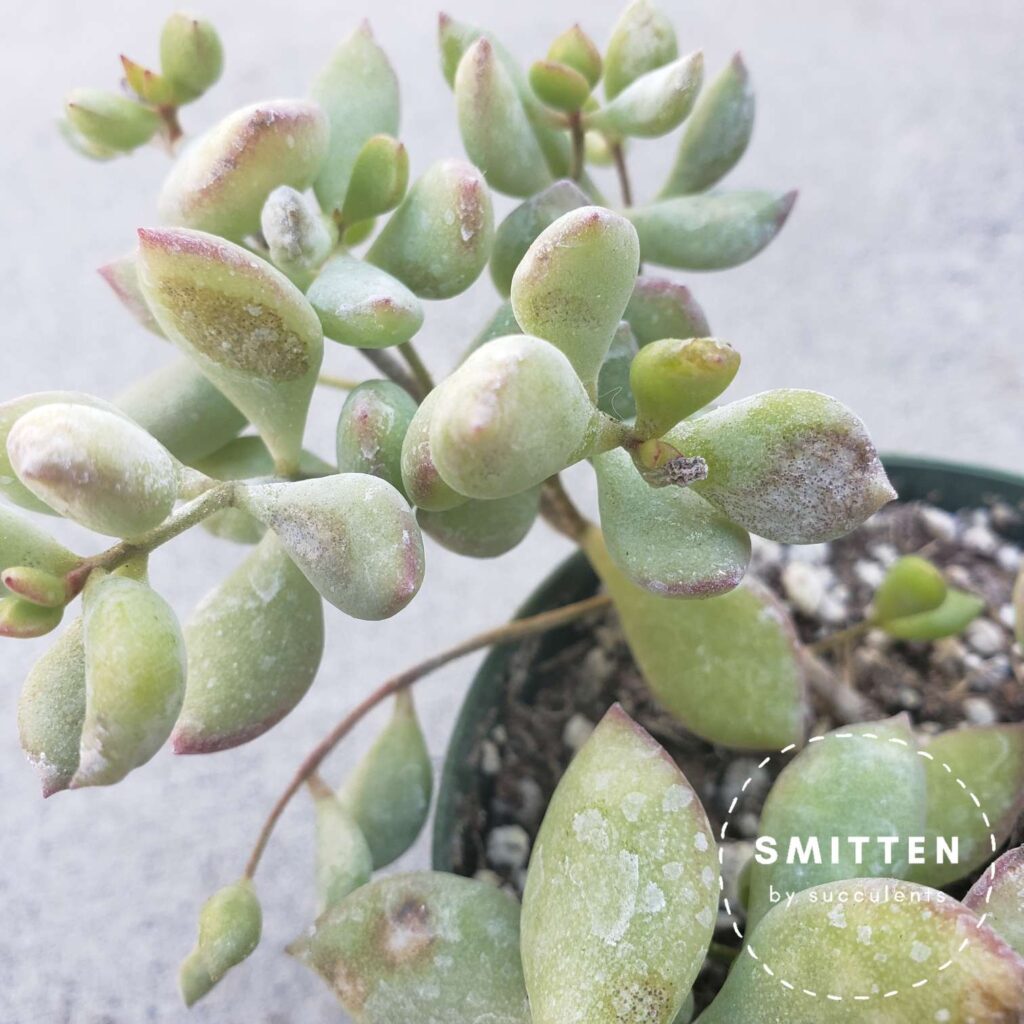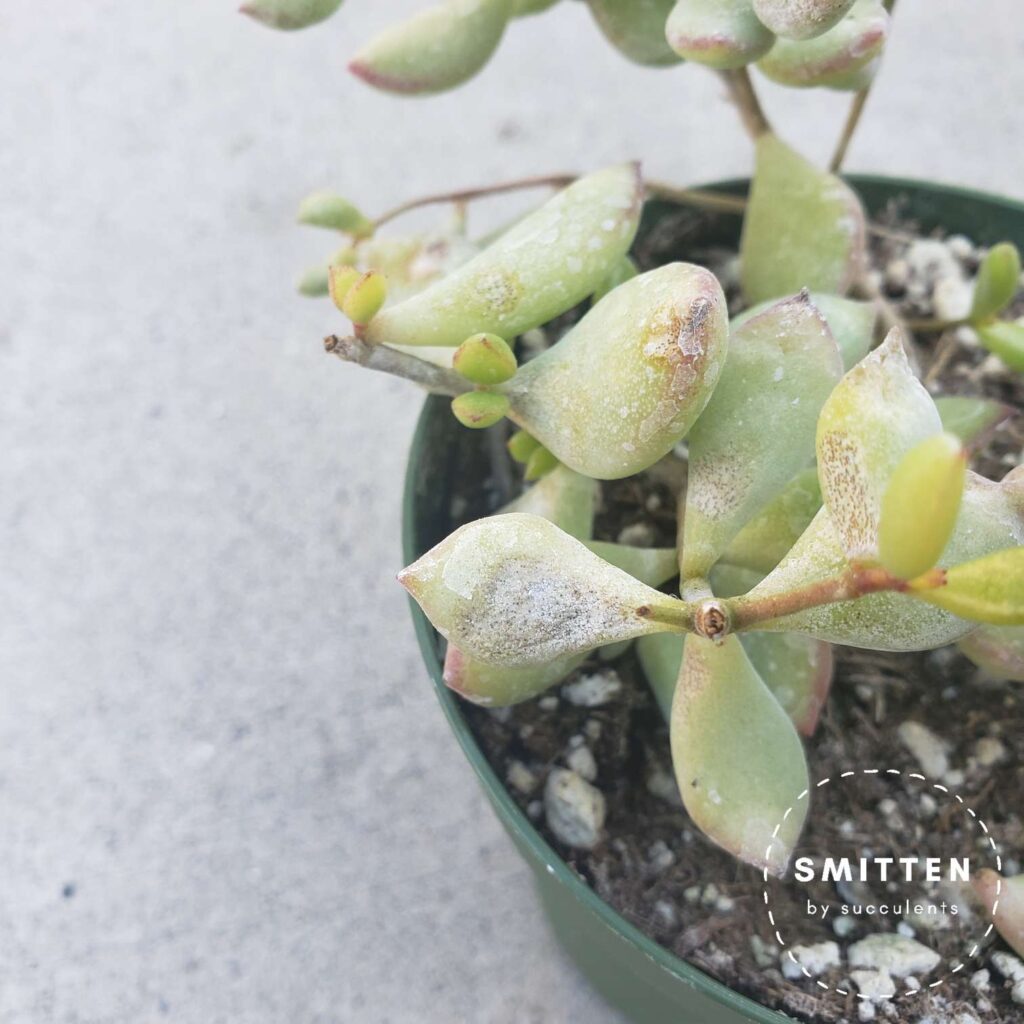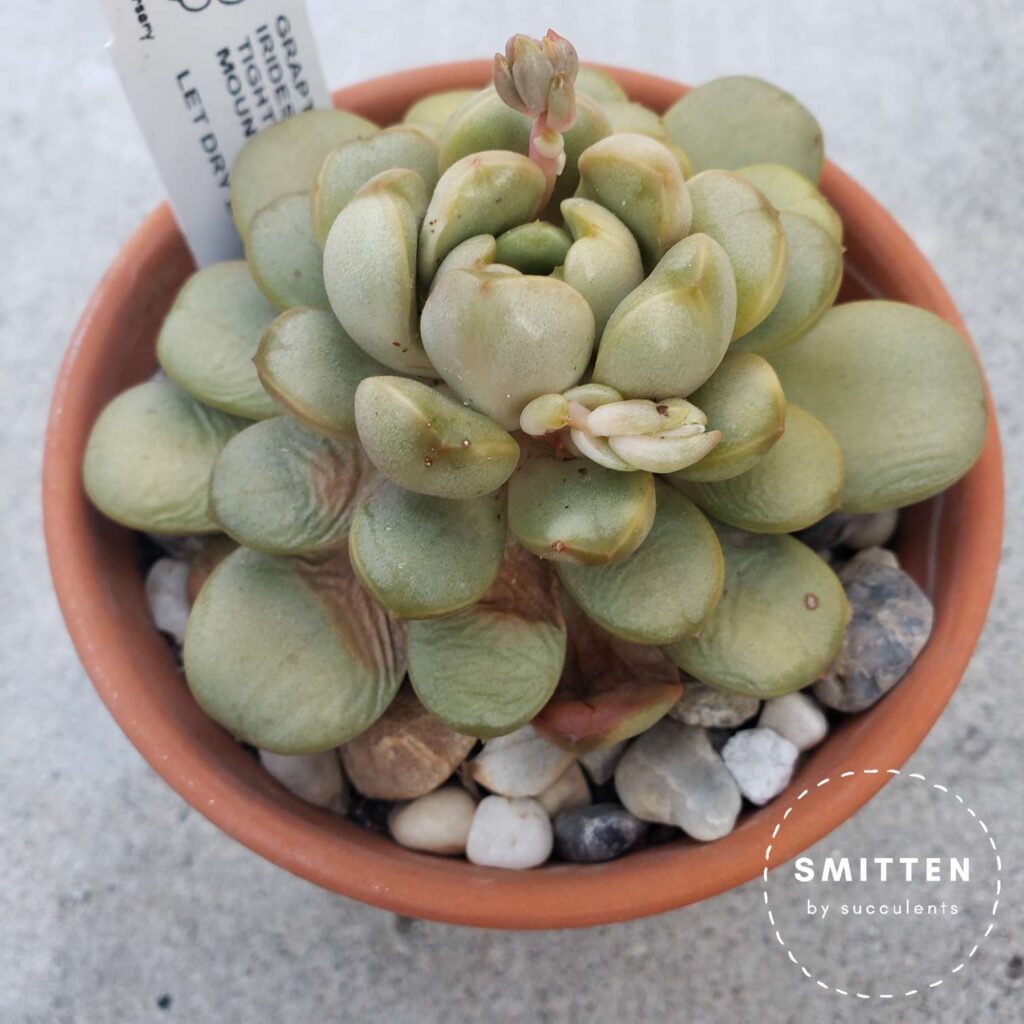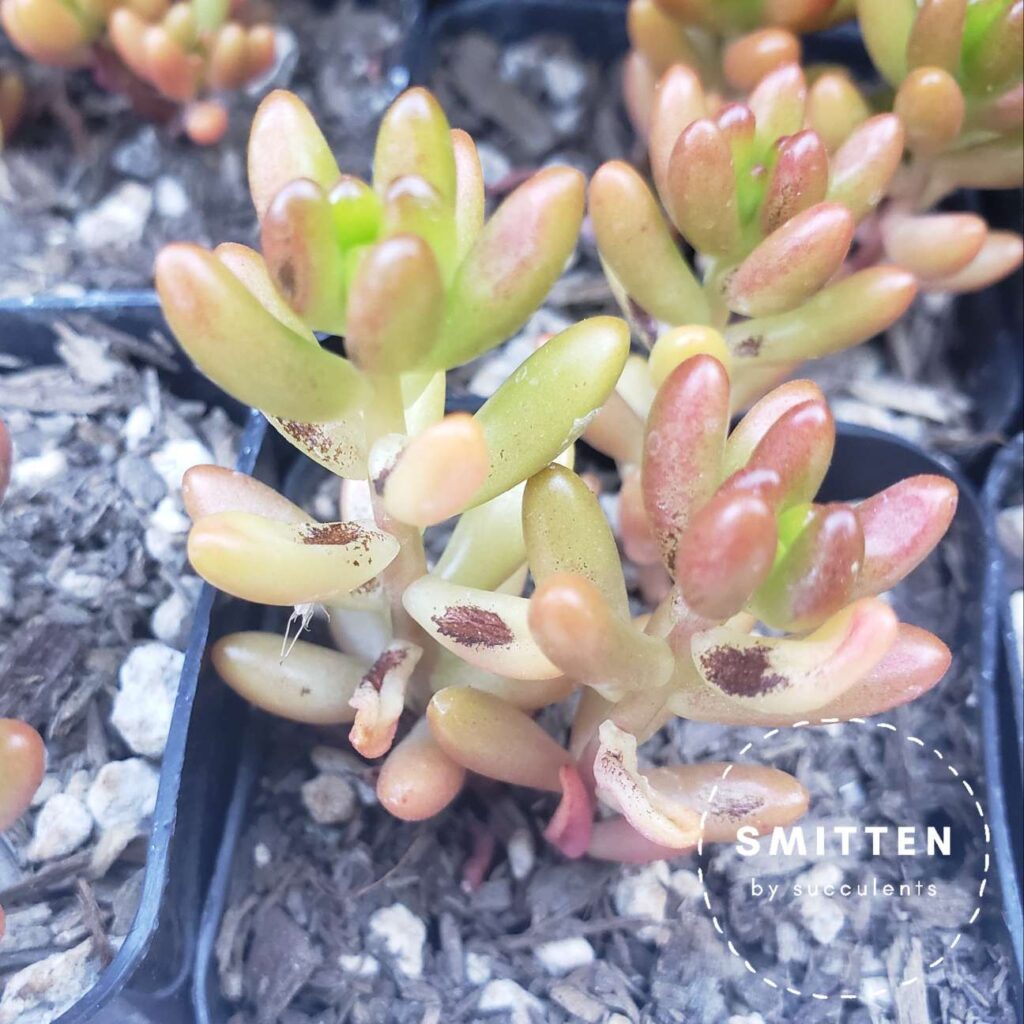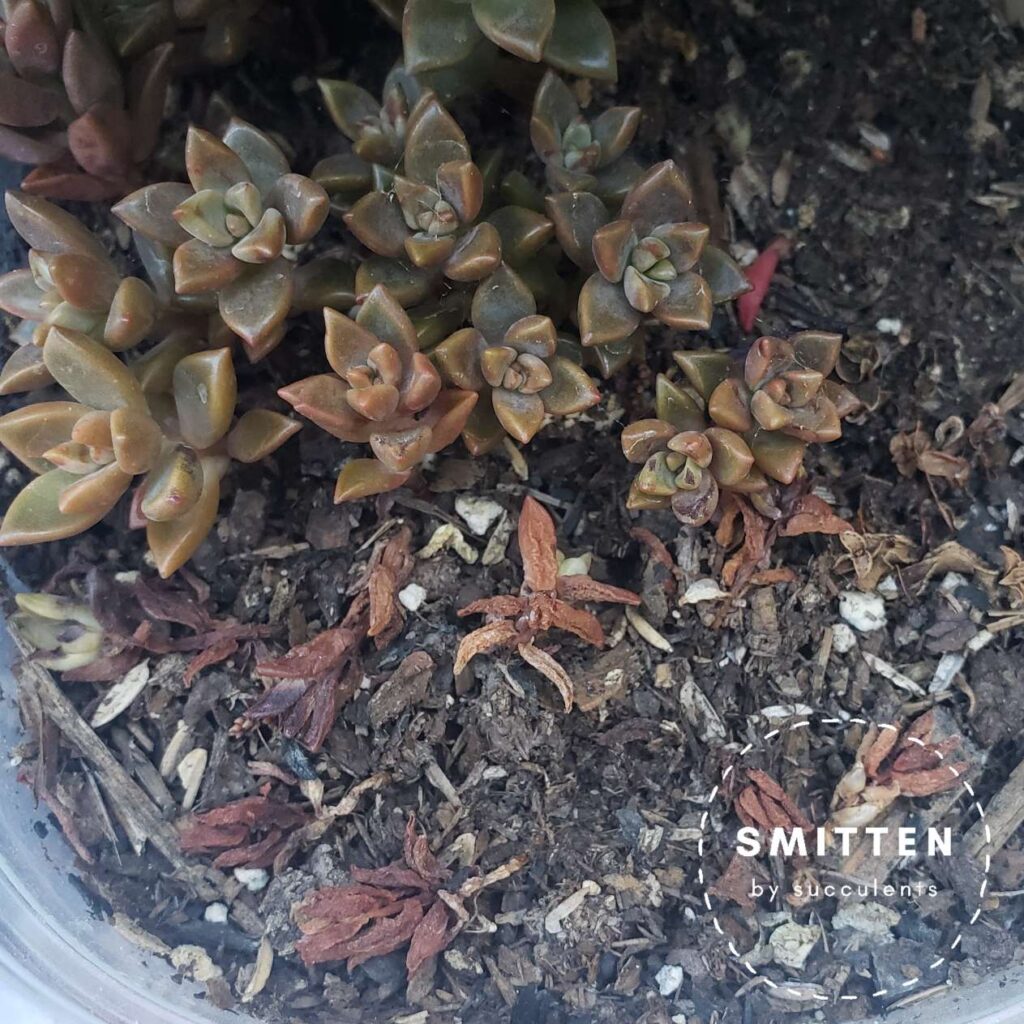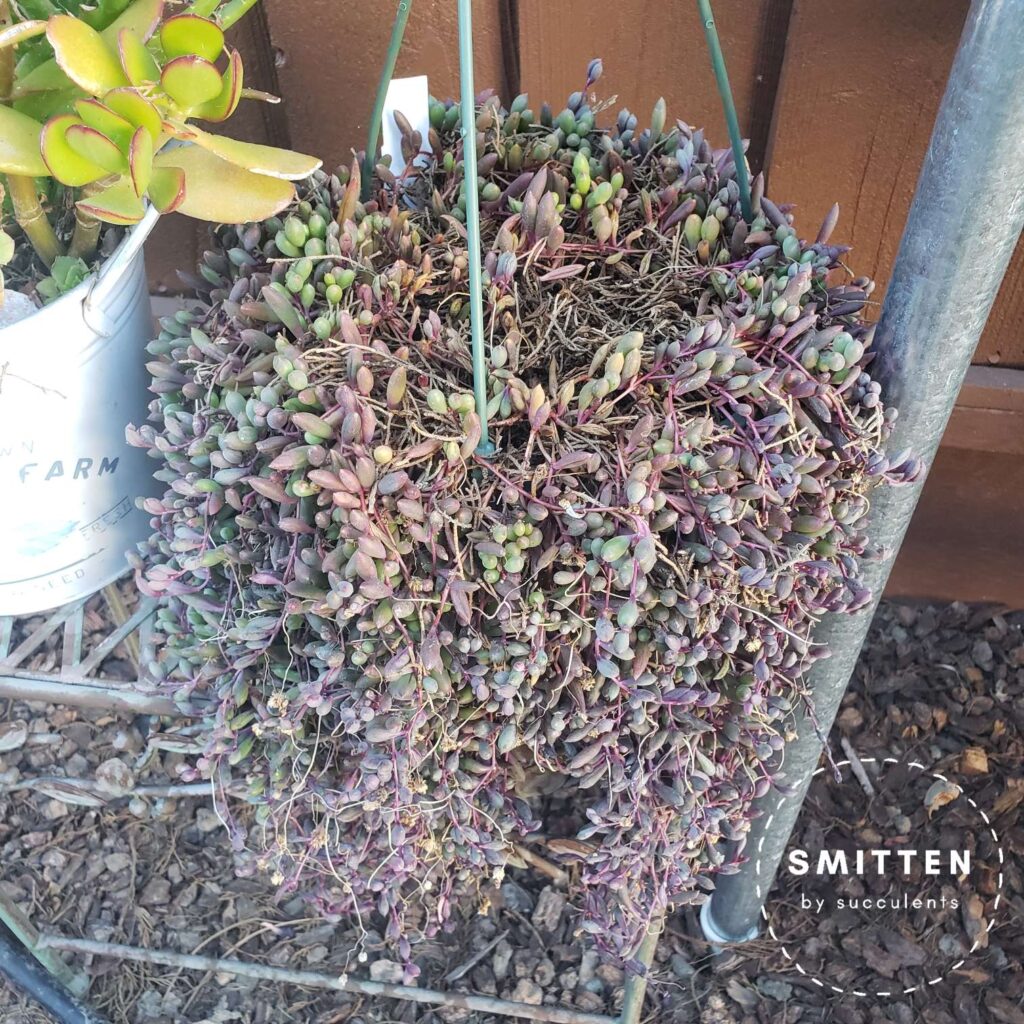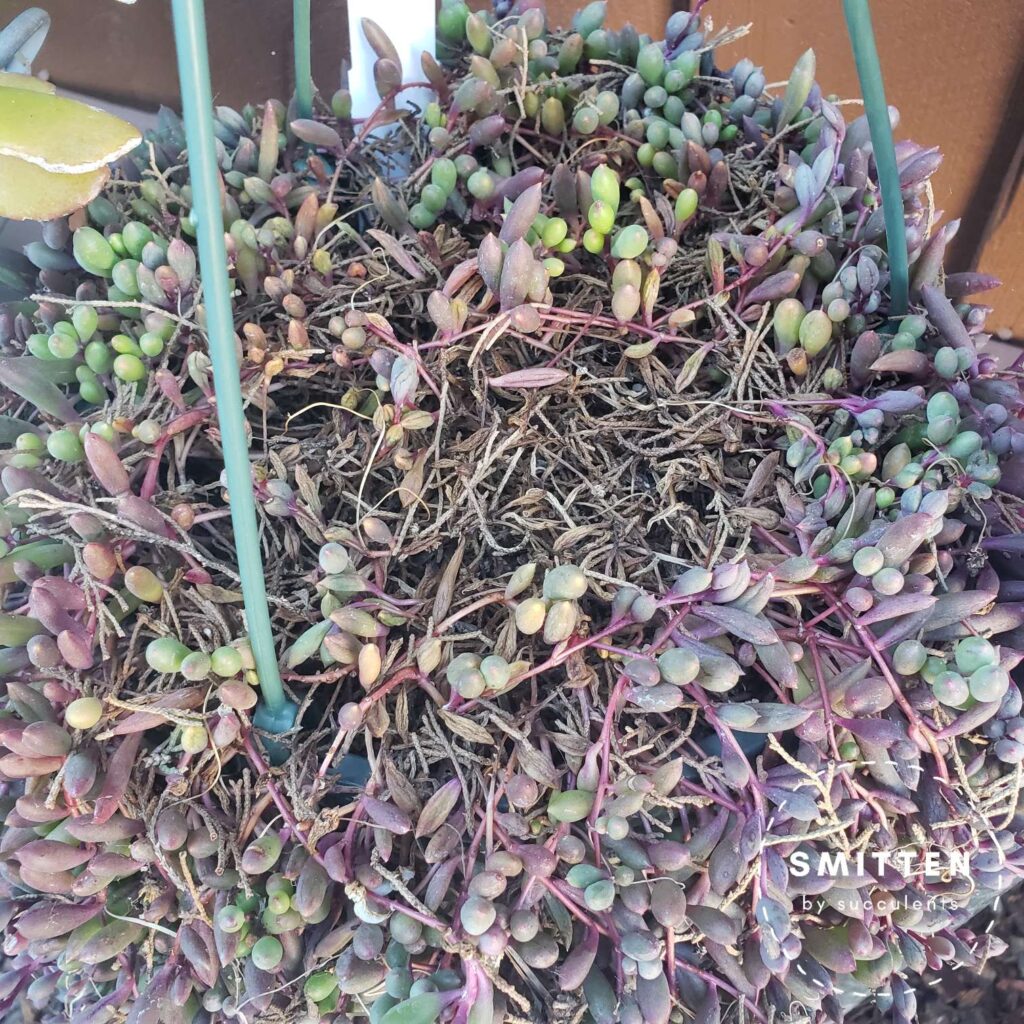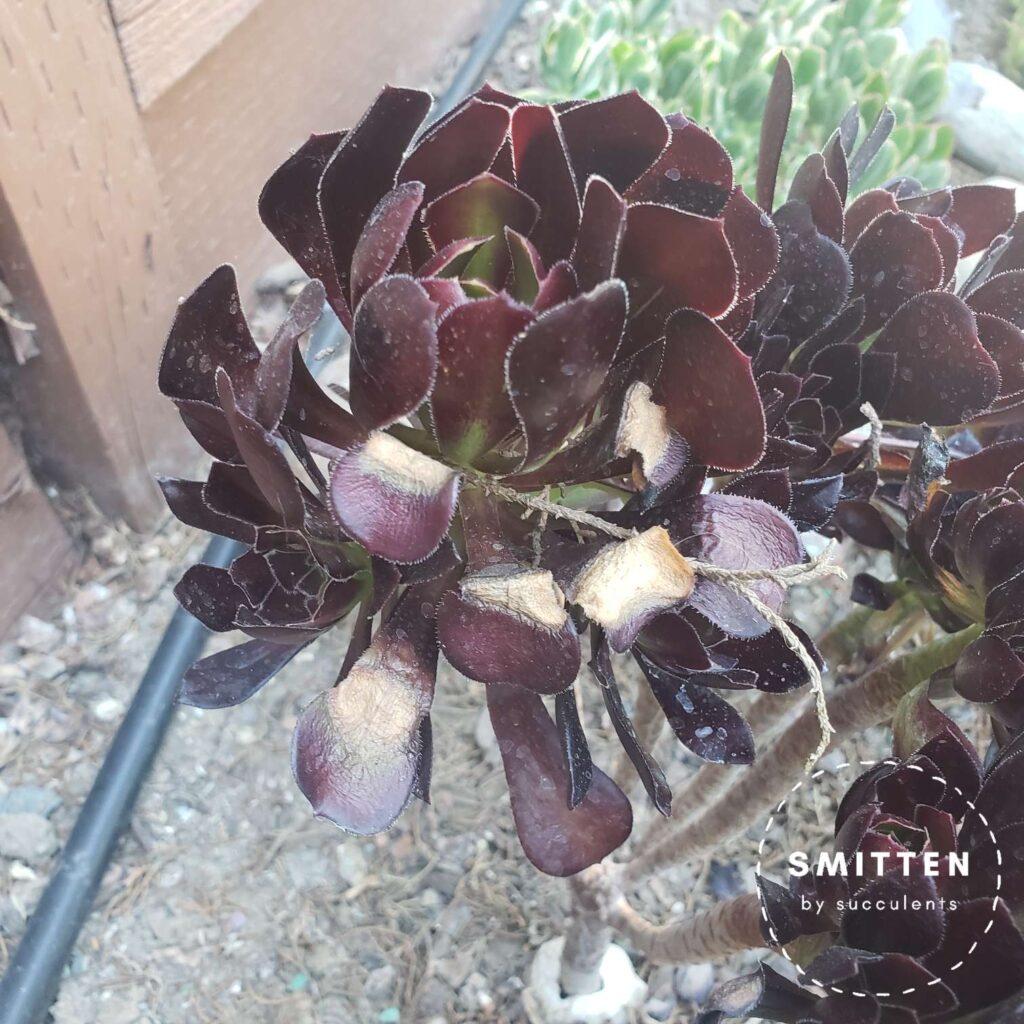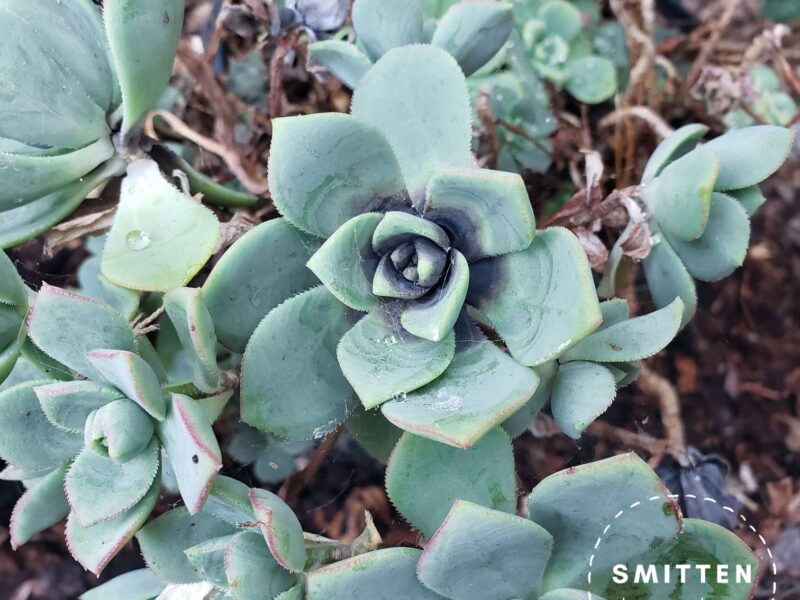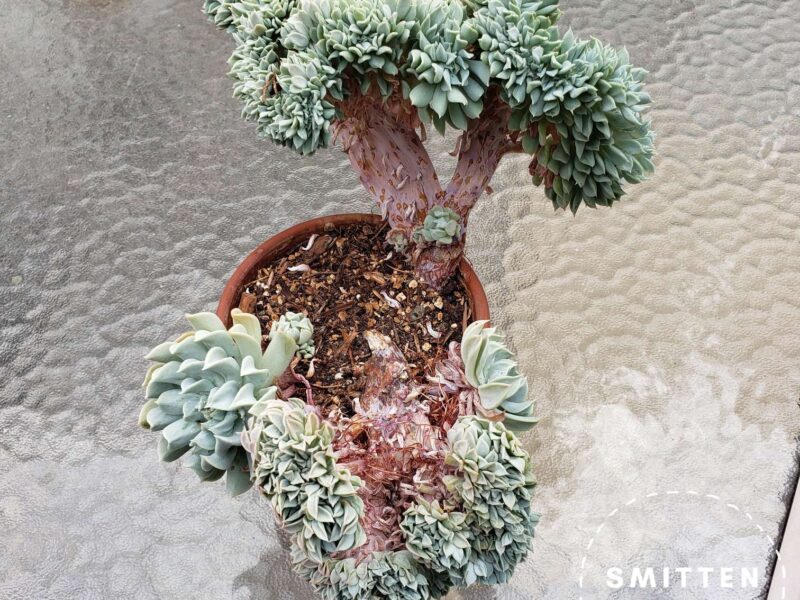Does your succulent look a little funny? Is it not as vibrant as it used to be? Does it have dull or discolored spots? Do these spots look like they’re growing? Is it a pest? Or is it sunburn?
Read on to learn more. Scroll to the bottom for photo examples of sunburn.
What does sunburn look like?
First, different succulents show sunburn in different ways. Second, it depends on the intensity of the burn. Light sunburn starts as small patches on the leaves that are dull or discolored. More intense sunburn can appear as dry or withered.
How do succulents get sunburned?
Succulents can get sunburned for many reasons.
First, not all succulents are full sun. Some succulents prefer partial sun such as haworthia and haworthiopsis. Under strong sun or light, these partial sun plants can burn.
However, even full sun succulents can get sunburned. It may be because they are not acclimated to the amount of light. If a full sun succulent was indoors for 2 weeks at a big box store, then it was purchased and placed outdoors in the sun the next day, it could get a sunburn because it is not acclimated to the amount of light. Even strong indoor plant lights can burn a succulent.
Even succulents that are acclimated to the amount of light can burn to a crisp if they are very thirsty.
Is sunburn bad for succulents?
It depends on the intensity and spread of the burn. Sunburn doesn’t necessarily kill a succulent, but it can damage the leaves which affects how effectively they can take in light.
If there are only a few sunburn spots, your succulent will probably be okay. If the sunburn is intense such as the leaves and growth point are burned, it could be a goner. (I would still try to help it to see if anything is still viable).
Can a sunburned succulent be fixed?
Unfortunately, the burn spots don’t heal or go away; they will remain. You will have to wait for new growth. Eventually, the burned leaves will be dropped.
If you noticed that your succulent has sunburn, it would be best to move it from its sunny spot to a shadier spot to avoid it burning more. If it’s an indoor plant, move the plant away from the light or move the light away from the plant.
If the succulent continues to be in the bright spot, it can continue to burn and develop more burn marks. It can eventually die as it can no longer take in light from its damaged leaves. If your plant has looked like the same for a while (not worsening), and your new growth looks healthy, then your plant has acclimated to the light.
How do I avoid sunburn?
First, find out the identity of your succulent and learn if it’s a full sun or partial sun succulent.
Second, succulents prefer morning light over afternoon light as afternoon light is strong. If possible, it’s best to place them where they are exposed the longest to morning light.
If that’s not possible or you’re unable to move your succulent (or perhaps a full shelf of succulents), when the light is strong, you could place a shade cloth over them. This can be a good alternative for the summer months.
If you are buying a succulent, and it was in a sunny spot when you bought it, it is probably acclimated to the light. If it was in a shaded spot, it is probably not acclimated to light. You will need to acclimate it. You can acclimate your succulent to more light with time and patience.
Here’s an example of how you can acclimate your succulent to more light: Start by placing the succulent in a sunny spot for 2 hours a day. After a few days, if it looks great, you can increase the duration in the sunny spot to something like 4 hours. If it has burn marks, you might want to decrease the duration in the sunny spot. Keep doing this process until you can reach 8 hours. It can be trial and error, and it does take patience.
Another example that is a bit more of a gamble and what I do would be: Put your succulent outside in a spot that’s shaded all day. After a couple of weeks, move it so that it’s only shaded half of the time. Check on it every couple of days to see if it is burning. If it’s burning, move it back under the shade all day. If it’s fine, keep it there a couple more weeks, and then move it so it’s in full sun. Check on it every couple of days to see how it’s doing.
Examples of Sunburn on Succulents
I live in Northern California, and my yard receives strong afternoon light. Therefore, I am experienced at sunburning my succulents. Here are some examples of sunburn:
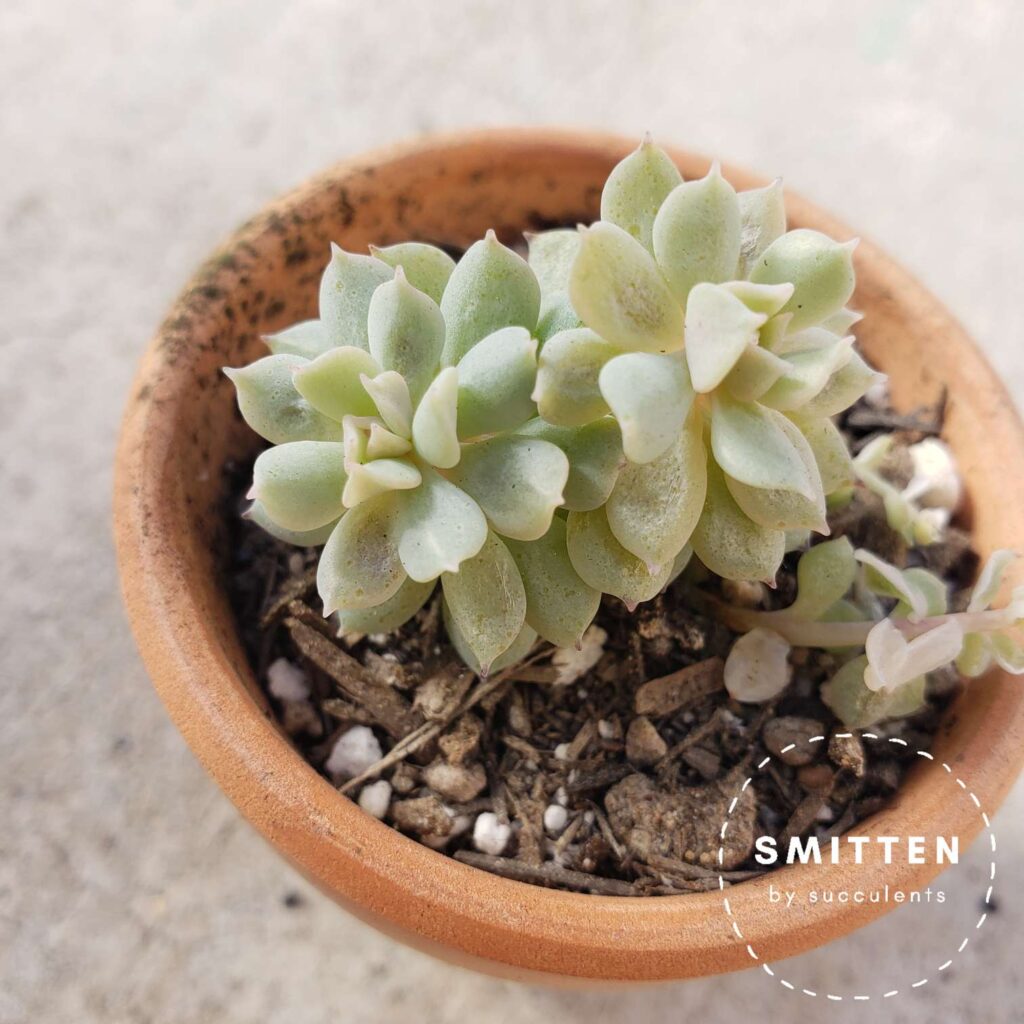
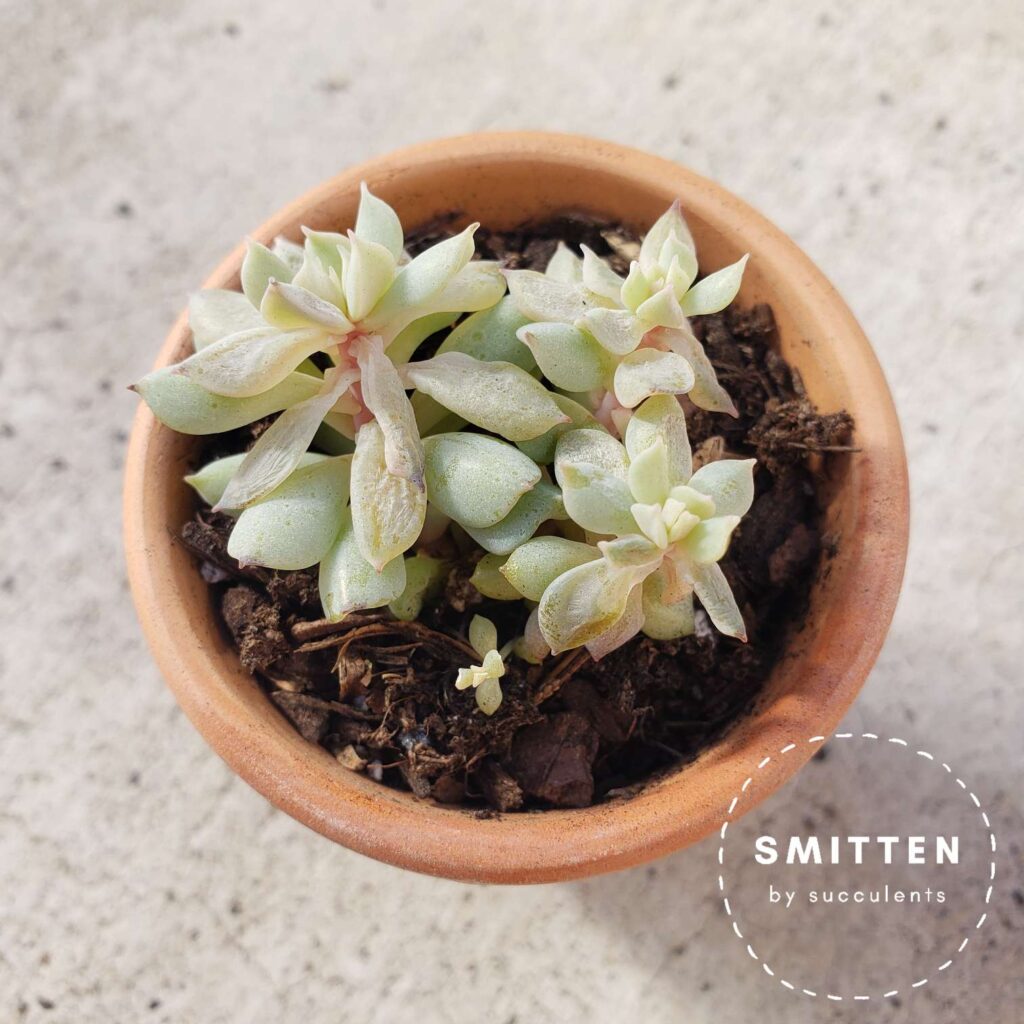
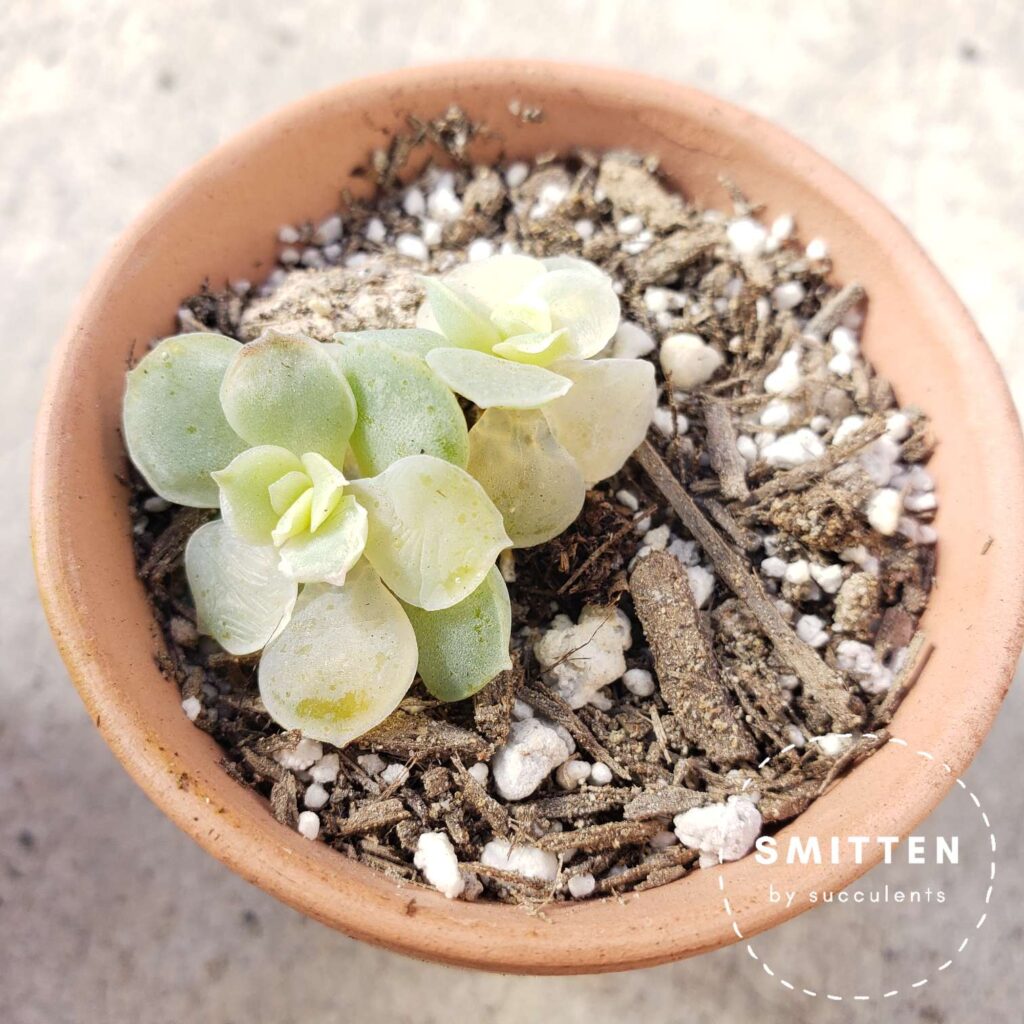
Closing Remarks
If you need help deciphering if your succulent is sunburned, feel free to comment below, and I’ll do my best to respond!
